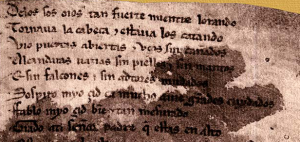Today is Spanish Friday so this post is in Spanish. ¡Scroll down for English translation!

En español las letras b y v tienen la misma pronunciación, una situación que les molesta a hispanohablantes y a estudiantes de español. Es difícil argumentar a favor de la retención de las dos letras distintas porque hay pocas palabras para las cuales les importa la diferencia. Conozco los siguientes “pares mínimos” (un término que normalmente se aplica a los sonidos, no a la escritura):
- baca vs. vaca
- bacilo vs. vacilo
- bate vs. vate
- bello vs. vello
- botar vs. votar
¿Conocen Uds. otros?
—————————————————————————————————————-
In Spanish, the letters b and v have the same pronunciation, a situation that causes problems for both Spanish speakers and Spanish students. It’s hard to argue in favor of keeping both letters in the alphabet because there are few words where the difference matters. I’m aware of the following “minimal pairs” (a term usually used for differences in pronunciation, not spelling):
- baca “automobile roof-rack” vs. vaca “cow”
- bacilo “bacillus” vs. vacilo “I vacillate”
- bate “[baseball] bat, he/she/you beats” vs. vate “bard, poet”
- bello “beautiful” vs. vello “down, fuzz”
- botar “to throw” vs. votar “to vote”
Do you know any others?
